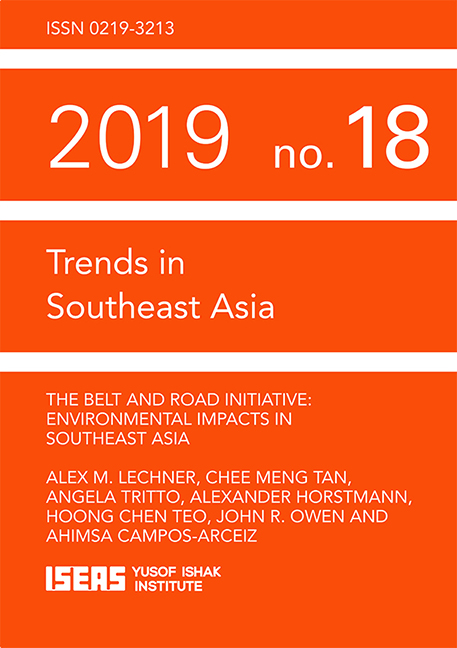The Belt and Road Initiative: Environmental Impacts in Southeast Asia
Published online by Cambridge University Press: 28 October 2021
Summary
INTRODUCTION
China's Belt and Road Initiative (BRI) is expected to be the largest infrastructure development scheme of the twenty-first century. It involves over eighty countries, with overall investments estimated to be between US$1 trillion to US$8.5 trillion.
President Xi Jinping launched the BRI in 2013, describing the initiative as an exercise in “economic cooperation” with a focus on connectivityand trade. The primary goals are to create policy coordination between countries, increase cultural exchange, promote financial integration and cooperation, facilitate international trade, and increase connectivity through infrastructure development.
While the goal of improving the prospects of developing nations is laudable, scholars across the world have raised concerns around the potential environmental and social impacts of the BRI. Of the five goals, perhaps the most visible and worrying is infrastructure development, notably via six terrestrial infrastructure corridors, a marine economic route and a recently announced polar BRI. These routes are expected to connect more than half of the world's population. Infrastructure development will include mega projects to overcome geographic barriers to growth such as those seen in ASEAN members states.
Southeast Asia, with a population of 320 million, which is expected to grow to 526 million by 2050, represents huge opportunities for trade and is a focus of BRI investment. The economic effects of BRI investments could be transformational and could smooth out income inequalities within ASEAN where gross domestic product per capita varies from as little as US$3,645 in Cambodia to US$85,535 in Singapore.
The direct and secondary impacts associated with major infrastructure corridors have been identified as posing threats to biodiversity in an already ecologically vulnerable region. Infrastructure development could negatively affect the atmosphere, hydrosphere, geosphere, and biosphere. Southeast Asia is home to four out of thirty-four of the planet's biodiversity hotspots and to the Coral Triangle, also known as the Amazon of the ocean, which hosts 600 reef-building coral species.
In this review we provide a synoptic overview of the potential environmental impacts in the region. We start with an inventory of BRI projects in Southeast Asia, and then we describe the potential negative impacts of BRI from an environmental perspective.
- Type
- Chapter
- Information
- The Belt and Road InitiativeEnvironmental Impacts in Southeast Asia, pp. 1 - 30Publisher: ISEAS–Yusof Ishak InstitutePrint publication year: 2021



